How to Make Sure Your Intranet Thrives
If you want your intranet to be more than just a placeholder, building a solid team and creating a collaborative space are key — check this blog out for some easy ways to make your intranet thrive!
Introduction
Building a great intranet isn’t just about setting it up—it’s about keeping it active and useful for everyone. If it’s not regularly updated, your intranet can quickly become outdated and ignored. Without new content and proper care, it might turn into a digital ghost town, full of old information that no one needs anymore. In this post, we’ll talk about what can go wrong when an intranet is left unattended and share simple tips to keep yours fresh, engaging, and helpful for your team.
Form a Team to Manage the Intranet
The first thing you need to do is create a team to manage the intranet. We often see businesses lean on one core resource to do all the management of their sites, and it's a recipe for friction.
What if they are out of office and an update needs to happen? What if different departments know more about particular areas than others?
Part of this comes from the fact that managing pages on an intranet is not rocket science. It's basically drag, drop, and type. Nothing to be scared of for the content management process.
The team members shouldn't need a large commitment of time, maybe a couple hours a month? This can depend a lot on if you're in a "building" season versus a "maintaining" season for you intranet, but let's assume it's more in the maintenance mode right now.
We recommend this team be made up of people from a few different roles:
- Marketing/Communications
- Leadership
- Employee Experience/Human Resources
We like to recommend the team be at least two people but not more than five. Two for redundancy-sake, but more than 5 starts allowing too many cooks in the kitchen.
Not everyone on this team will need to make actual changes to the intranet, the goal of this is more about keeping the intranet connected to the organization and what is important over time. This means its primary job is to keep the intranet evolving with the business when needed.
Have a Space to Collaborate
When you setup a team, you should be always looking to create a space where the team members can stay aligned and communicate.
We would usually recommend creating a Microsoft Team "Shared Workspace" where any discussion, approvals, or ideation can happen. It's important that this Team is private to allow the team to work on things without prying eyes 👀 Yeah, you know who we're talking about.
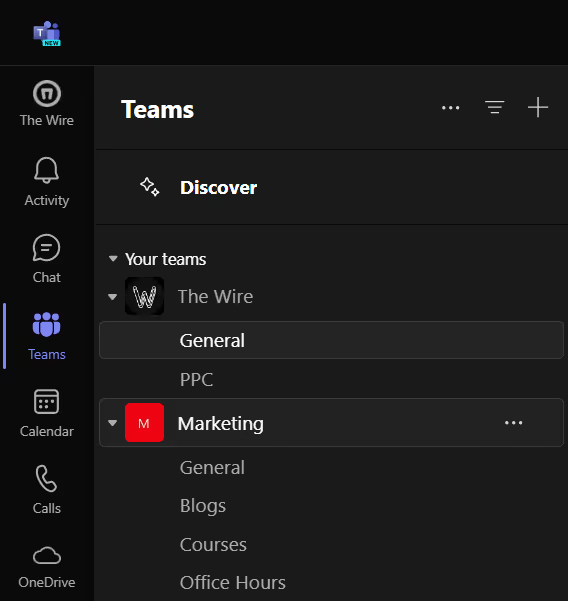
Meet Regularly
Now that your intranet team is in place, it's time to establish a routine for keeping everyone aligned and the content flowing smoothly. Regular meetings are essential for maintaining the momentum and making sure everyone's on the same page.
This intranet team should have recurring meetings. We recommend meeting monthly, at minimum, and for no more than 1 hour. This meeting should cover the following topics:
- Review any static content on the home page: Static content should be important and relevant content. This meeting is a good opportunity to review it.
- Review news posts: Discuss if any recent posts went well or had issues and review upcoming posts to make sure they are moving forward.
- Review recurring content: Every intranet should have recurring content that happens on a regular cadence. Make sure these are moving forward.
- Discuss content initiatives: Often there will be some area of content the team is working on. Review progress and discuss issues or problems.
- Feedback discussion: Discuss any relevant feedback from people who are using the intranet.

Assign the Work
To make sure steps are taken to update the intranet, you should always assign actual specific tasks to team members using a shared tool. This not only keeps each person accountable for their share of work, but it also keeps the entire team aligned on who's responsible for what content.
We recommend (what works for us, at least) using Planner associated with the Team "Shared Workspace" you created or using a Loop task list. These tools help with reminders and approaching due dates, which feed your agenda items each month you meet.
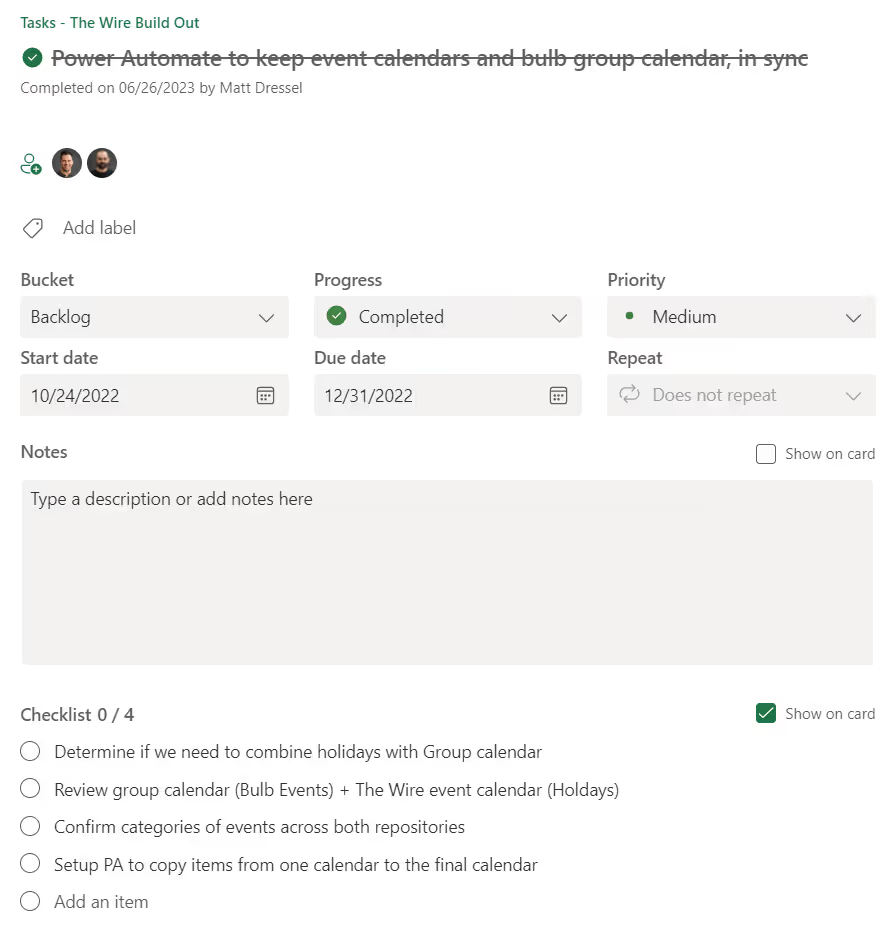
Divide Out the Effort
Unless employees are in a role dedicated to creating a lot of content themselves, the commitment required to be part of this group should be minimal.
Our team is a handful of people that check in within a 30-minute window once every month, and each person spends between 1-5 hours in that month creating content, answering questions, and supporting others in the team. This can vary depending on the size of the organization, content, and the intranet team itself, but ideally, this takes less than 5 percent of an individual's time in a week.

SELF ASSESSMENT
Is your business getting full value from your M365 subscription?
Billions of dollars are wasted each year on underused subscriptions. Take 3 minutes to find out where your tools are driving results, and where they’re holding you back.
Find Out Now

Is Team Communication Holding You Back?
Find Out in Just 2 Minutes.
Take our quick scorecard to uncover communication gaps and hidden barriers within your team.
Creating Content Regularly Can Be Easy
The key to a thriving intranet is to prevent it from growing stale! Commit to publishing consistent news posts and updates - this not only provides important information to your organization, but also sets the expectation that the intranet is a reliable source to continue returning to.
Recurring Content
If creating content consistently seems like a challenge, identify regularly scheduled events or updates that happen at your organization and frame your news content around it. Spend your effort on finding naturally recurring events to highlight rather than manufacturing novel content every time. This content might seem basic, but it is easier and more valuable than people think. Below are a few common things every company is going to have:
- Company Updates
- Holiday Announcements (annually)
- Business Updates (quarterly)
- Sales Updates (as needed)
- Benefits Changes (as needed)
- Customer Spotlights (quarterly)
- Employee Engagement
- Staff Spotlights (monthly)
- Team Outing Follow-up (as needed)
- Staff Changes (as needed)
While these may seem trivial or more work than they are worth, you will be surprised how much value they create for your team. They create a shared history for your organization that fosters a feeling of belonging and inclusion
Update Your Homepage
Your homepage is going to be one of your most frequented pages and keeping it updated can be simple.
- Rollup news content so that you can leverage your recurring content to keep the homepage fresh
- For static content on your home page, make sure the content you're highlighting is changing - bring time-sensitive information or new updates to the forefront. For example, highlight information about benefits during open enrollment and replace the content once enrollment closes. Even if the content beyond your home page is fresh, users may not reach it if the site looks stale.

Use Page Templates
Use page templates or copy existing pages to make creating new content easy. Once you've created a pattern, you'll save time and effort because you won't need to create it from scratch every time.
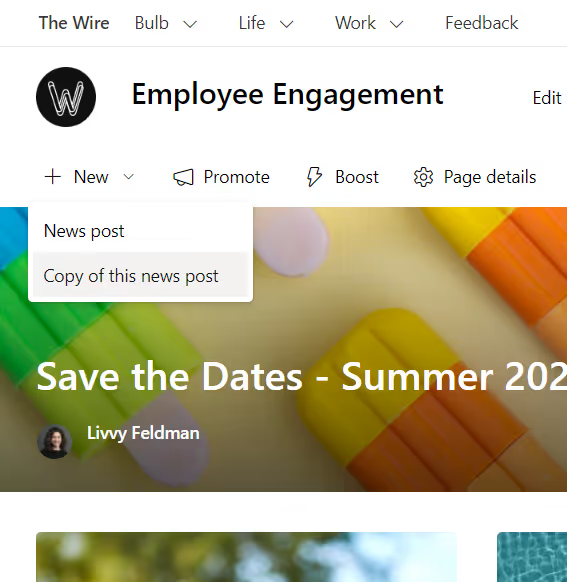
Schedule News Ahead of Time
When you schedule news to be posted in the future you can create a "stream" of content at a time convenient for you. It also allows you to easily create anticipation from your users. They will be watching for the new company update on the first Friday of each quarter.
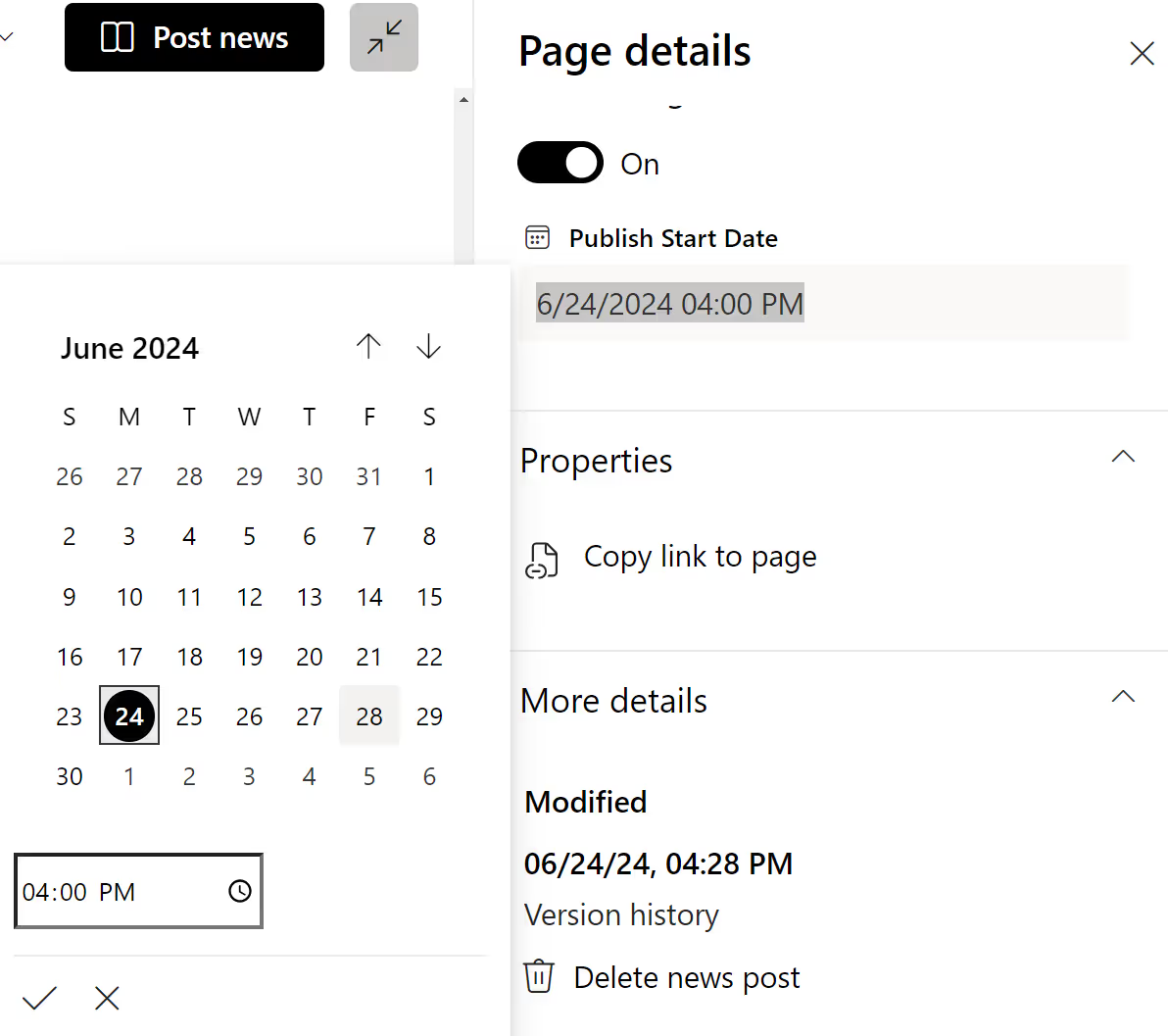
Generate a Buzz
If you are doing all the things we have talked about, you are going to create a buzz around your intranet and other people in the organization will start asking to add content. This is where you want to be, because it creates opportunities to have other areas of your organization involved to create even more interesting, relevant, and valuable content.
Plan to Iterate and Grow as Needed
The one thing that will stop you from successfully getting your intranet to thrive is trying to do too much too fast. This creates undo pressure, expectations, and constraints. The result is often that nothing happens, and the intranet just languishes.
Instead, set the expectation that what you are doing is just the start and things will grow as the need arises. This will result in better content that is focused on what is really needed and provides value to the organization.
This will work, because you have a team focused on this content, that meets regularly, and is creating content regularly. Which will naturally get feedback from your users about what is important to them and will be adjusting the content accordingly.
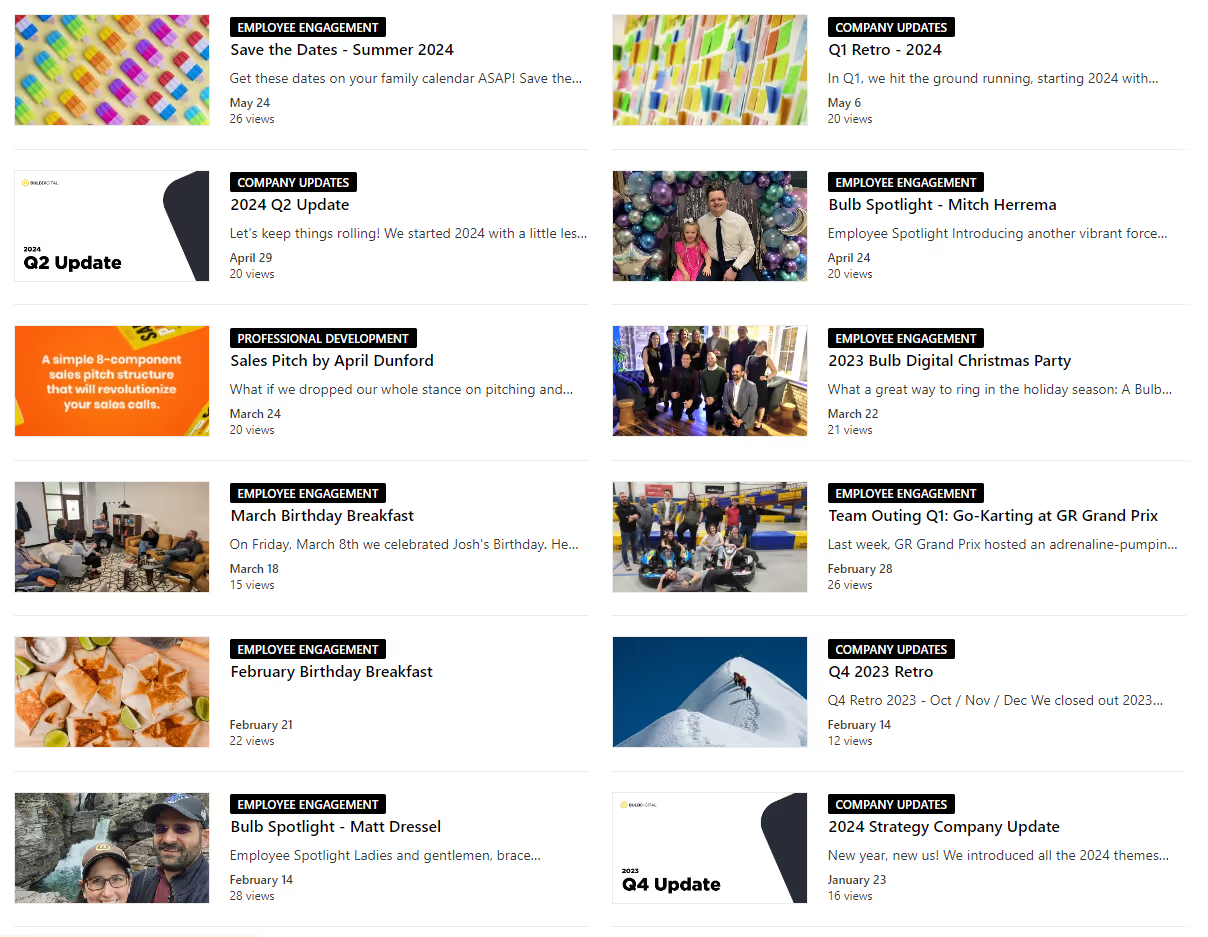







.jpg)







